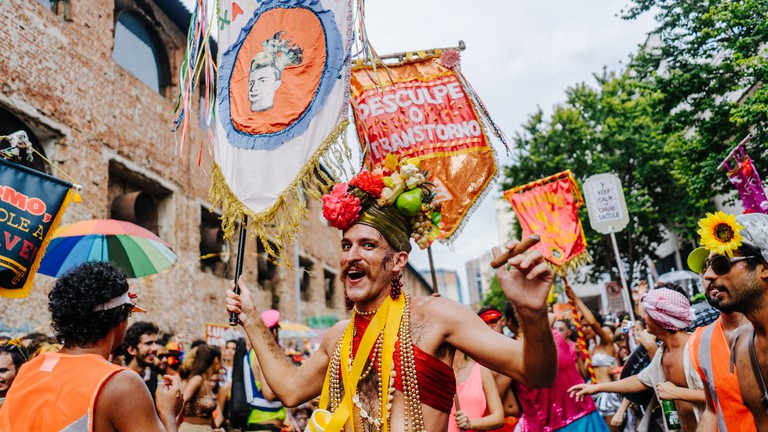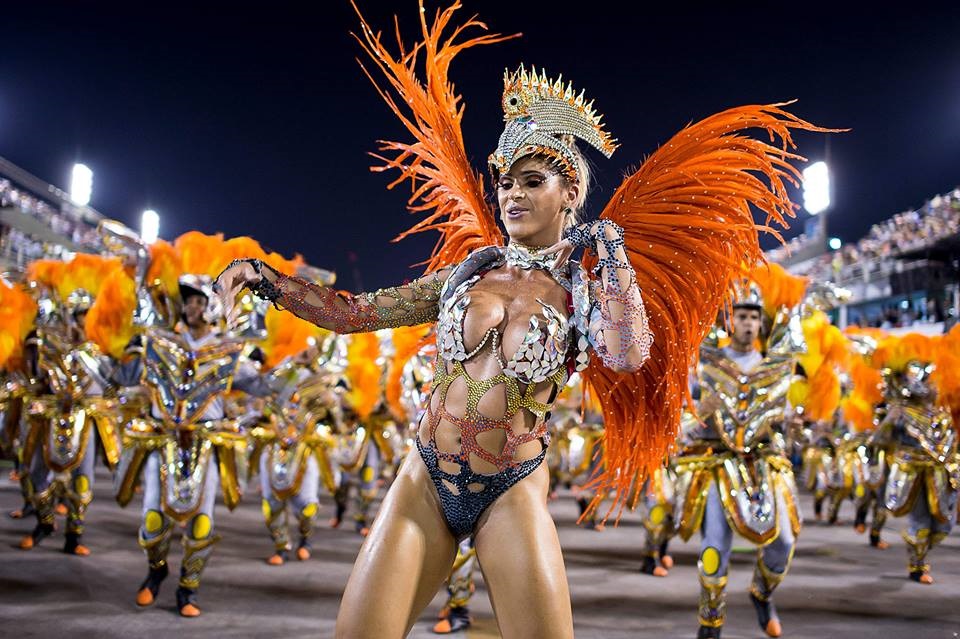Carnival is a celebration seen throughout Latin America and parts of the U.S. (“Mardi Gras” is related to this), but nobody does it up like Brazil! The Carnival parades and festivities throughout the country have won fame and recognition the world over, and it’s hard not to feel the urge to participate when looking at the most recent celebration’s photos and videos. But did you know that you can in fact participate in Brazilian Carnival?
Can I Participate?
The key with taking part in Carnival is planning. Even though you may be reading this articles months before the next celebration, this is a humongous event that calls for adequate time to prepare. Carnival is held from the Friday to Tuesday right before Ash Wednesday, which is a moving date that falls between February and March every year. And every year around this time, hundreds of thousands of tourists descend on Brazil to join the millions of Brazilians celebrating their beloved holiday.
To determine the best way to participate, you need to figure out two main things whether you prefer:
- being a spectator or
- dancing in the middle of it all
- how much money you have to spend on this.
As you will see, there are a variety of ways you can participate, though some will work for you better than others (and remember, you can always do a combination of events).
Types of Carnivals

If you want to save some money and be in a more relaxed atmosphere, street carnivals are a great way to go. There are many free ones, where you can literally walk right up and start dancing (costumes are typically optional for casual participants), but there are others that are commercialized and require fees to enter into.
The major street carnivals take place in the northeastern part of Brazil, particularly in the cities of Recife, Fortaleza and Salvador. These celebrations are more like block parties, and despite the fees (which vary from each one), they can still be a lot cheaper and considerably less strict than the parades down in the southeast. Everywhere there is singing and dancing, and they are a great way to experience Brazilian culture. That said, the parades in the southeast are truly a sight to see.
The Rio de Janeiro Carnival is typically the biggest of the celebrations, and it is where most tourists flock. In Rio de Janeiro (and in the other southeastern cities of Sao Paulo and Vitória), huge parades are held by samba schools, all competing with each other to win “best parade.” These parades involve hundreds of dancers in costumes, huge colorful floats, and lots of noise. Each school parades through a giant outdoor stadium called the “sambadromo”, and if they end up among the top-ranking parades, they get the go again on the final day, after which the judges will choose a winner.
How to Participate in Carnival?
To participate in one of these parades, you will need to purchase a costume from one of the participating samba schools. You can do this right on rio-carnival.net, the official website (for foreigners, at least). However, you will only have a limited time window to purchase costumes and thereby register your participation. This usually begins at the end of November or in early December, and it usually lasts as long as costumes are available.

Most of the costumes available for outside participants (those not directly part of the samba school, such as yourself) are unisex, though they are still very beautiful and elaborate either way. Some can cost hundreds of dollars, so consider that.
The day of the parade, you will need to show up on time fully dressed in your costume. You will be directed to stand in formation, and you will have to hold this formation while dancing down through the sambadromo. Dancing samba is not exactly necessary where you will be— the most important part is singing, smiling and staying energetic.
If you or someone in your travel group does not want to directly participate in the parade, there is always a great view from the stands! Even participating in Carnival parades as a spectator is an unforgettable experience. In the sambadromo, however, be prepared for pricey tickets. The best ones can cost hundreds of dollars (sometimes thousands), and even the “cheapest” seats are not exactly a mindless expense. The faster you act, the more likely you are to get lower-priced passes, so be sure to jump on them as soon as tickets go on sale. Because of the scale of the celebrations, tickets fill up fast.
Remember, it may take a lot of advanced planning, but this is a once-in-a-lifetime experience. Whatever form of celebration you choose though, just remember to use your best judgment, budget wisely, and most importantly of all, have fun! Learning a little samba in advance couldn’t hurt either.

